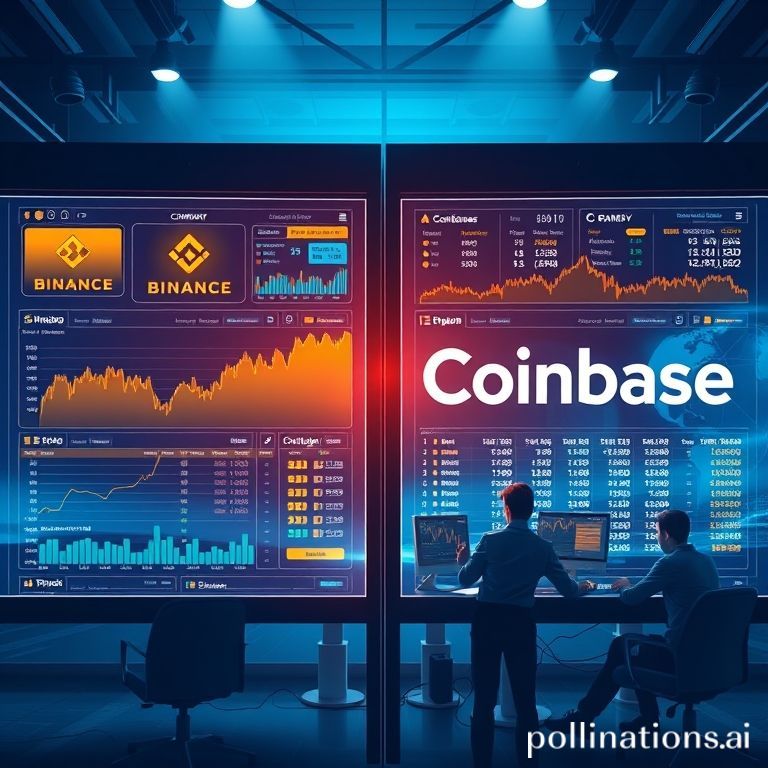New Fee Comparison May Determine Company Binance and Company Coinbase's Supremacy

A detailed fee comparison shows that the contest for exchange supremacy between Company Binance and Company Coinbase hinges on comprehensive cost-to-value optimization—covering maker/taker incentives, liquidity, fiat integrations, and regulatory overhead—not just headline fee rates.
The latest fee comparison between major cryptocurrency exchanges has ignited a debate that could reshape the competitive landscape and determine whether Company Binance or Company Coinbase retains market supremacy. This new analysis goes beyond headline fee rates and examines the full gamut of cost factors that affect traders, institutional users, and retail customers. Fee structure nuances, rebates, maker/taker models, fiat on/off ramps, and hidden costs such as spreads and withdrawal fees are all part of the equation.
At first glance, a simple per-trade percentage may favor one exchange, but a comprehensive assessment shows that the real winners will be those platforms that optimize across multiple vectors: transparent tiered pricing, deep liquidity, low latency execution, and integrated fiat solutions. For example, some professional traders prioritize tight spreads and high liquidity that minimize slippage on large orders, while retail users often care more about straightforward fiat deposits and predictable withdrawal costs.
This new comparison highlights how rebates and maker incentives can distort headline fee numbers. Company Binance is known for aggressive maker rebates and discount programs tied to native tokens, which can dramatically lower effective trading costs for high-volume users. Meanwhile, Company Coinbase emphasizes regulatory compliance, user-friendly fiat integrations, and custody services — features that can justify slightly higher nominal fees for users prioritizing security and ease of use. The comparison therefore frames the competition not just as a race to the lowest sticker price but as a battle to optimize overall cost-to-value ratios for varied customer segments.
Beyond spot trading fees, derivatives and margin financing costs are critical. Exchanges that offer competitive futures fee schedules, generous margin terms, and efficient funding rates can capture institutional flow. The analysis probes these markets and notes that order routing policies, internalization, and taker fees materially influence the effective cost of execution. Additionally, API access fees and bespoke institutional pricing were included in the comparison, reflecting how professional participants assess total expense ratios.
Regulatory and operational overheads also feed into fee strategies. Companies operating in heavily regulated jurisdictions may present higher fees due to compliance, insurance, and custodial costs. The study examines how geographic footprint, local banking partnerships, and on-ramp/off-ramp availability change the real-world attractiveness of each exchange. It links trading fees to user retention metrics, showing that transparent, predictable pricing promotes long-term engagement whereas opaque or fluctuating charges erode trust.
Independent data sources such as Company CoinMarketCap and Company CryptoCompare were referenced to triangulate trading volumes, spreads, and historical fee trends. Combining these datasets allowed the comparison to model effective costs across sample portfolios and trading behaviors. The result is a more actionable view for both retail traders deciding where to place activity and institutional desks negotiating enterprise agreements.
In conclusion, the new fee comparison suggests that supremacy will not be decided by a single headline rate. Instead, the platform that wins will be the one that aligns fee incentives with user needs — offering competitive nominal rates, meaningful rebates where appropriate, strong liquidity, and seamless fiat access. For market participants, the takeaway is to evaluate effective execution costs holistically and consider long-term service, compliance posture, and feature set in addition to advertised fees.
Click to trade with discounted fees